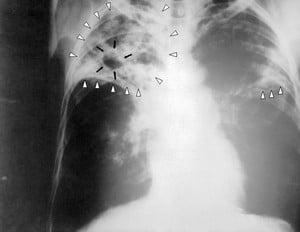Introduction
Actual cost reporting is an effective method of cost reporting for small companies with low sales volume. However, it is not realistic for larger companies to use this form of cost reporting. As smaller companies grow they must recognize that a formal cost management system is necessary. In order to examine formal integrated cost management systems it is necessary to define cost management systems, understand the scope of these systems, recognize the goals of these systems, and consider the items that affect the design of these systems.
Integrated Cost Management Systems
A cost management system is a method that is used to plan and control the decisions an organization makes regarding cost generating activities, in order to lower product cost and increase product value for customers. Cost management systems provide information that helps management make short-term and long-term decisions regarding “amounts and kinds of materials being used, changes in plant processes, and changes in product design” (Horngren et al, 2006, p. 2-3). Ultimately, cost management systems are used to help make decisions that will increase short-term profit and improve the long-term position of the company.
Three of the most common costing systems are job order costing, process costing, and activity-based costing (ABC). Job order costing is used by companies that produce products for specific orders. This type of system estimates the costs associated with producing goods for different jobs (Atkinson et. al., 2005, p. 79). Process costing is often used by companies that operate using continuous processing. This type of system applies the costs of production, labor, and support activities as the goods pass through the different process stages (Atkinson et al, 2005, p. 92-94). ABC is a two-stage method of allocating costs. In the first stage, costs are allocated to pools and in the second stage the cost pools are allocated to products or services (Edmonds et al, 2006, p. 233).
Cost management systems cover a broad scope of activities and “should not be interpreted to mean only continuous reduction in costs” (Horngren et al, 2006, p. 3). These systems separate product costs into three categories: direct material, direct labor, and overhead. However, cost management systems do more than that. They help management measure various cost activities, such as production volume, sales volumes, machine hours, manpower hours, volume of material used, etc. Using the information provided by the cost management system, management may make decisions that appear to increase costs. For example, management may choose to increase advertising costs. This increases costs initially, but the goal is to ultimately improve profit later.
Items that Affect the Design of an Integrated Cost Management System
Motivation – A company must first set organizational goals, and then create measurements to determine whether those goals are being reached, as well as train and motivate management to reach those goals. For example, management may look at prior year income statements and note that net income increased by 42% from 2003 to 2004 and 45.54% from 2004 to 2005. Based on that information, management might set a goal to increase net income by 50% from 2005 to 2006. Once this goal has been set, the company must create measurements that can be used to determine throughout the year whether the company is likely to meet that goal at year end. In addition, the company must provide training and motivation to managers in order to increase the likelihood of reaching the goal.
Information – the system should be designed so that it provides information which helps management plan, control, make decisions, and evaluate performance. For example, a fruit juice company may decide that it wants to evaluate information regarding total juice costs, as well as apple juice costs and grape juice costs separately. In order to design a system for this company, requirements would include the ability to provide information on unit production, production costs, unit sales, unit sales price, total sales price, and cost of goods sold.
Reporting – the system should be designed so that it provides reports with the necessary information in a manner that management can use in order to make decisions. The reporting feature of any system is of great importance. The company must decide how the information should be presented and then design the system so that the information is organized and displayed in the manner most beneficial to management.
Conclusion
Actual cost reporting may work for smaller companies, but as a company grows it will become more and more difficult to use that form of cost reporting. An integrated cost reporting system will be invaluable to the company, as it will assist management with planning, controlling, and decision-making.
References
Atkinson, A.A., Kaplan, R.S., & Young, S.M. (2005). “Management accounting.” (Custom ed.). Upper Saddle River, NJ: Pearson Custom Publishing.
Edmonds, C.D., Edmonds, T.P., Olds, P.R., & Schneider, N.W. (2006). Fundamental managerial accounting concepts.” (3rd ed.). New York: McGraw-Hill Irwin.
Horngren, C. T., Datar, S. M., & Foster, G. (2006). “Cost Accounting: A managerial emphasis.” (12th ed.). Upper Saddle River, NJ: Pearson Prentice Hall.




